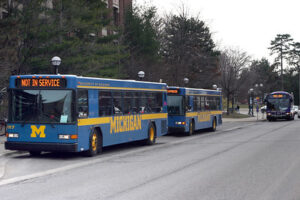A group of concerned citizens intends to meet with Ohio Governor Mike Dewine in an effort to save Eastern Gateway Community College. EGCC, which is in the middle of a severe financial crisis, operates two campuses – one in Steubenville, OH and one approximately one hour north in Youngstown. The group was initially responsible for bringing EGCC to Youngstown in 2009. Prior to that, Youngstown, which is Ohio’s 11th most populous city, did not have access to a community college.
The group, Alliance for Congregational Transformation Influencing Our Neighborhoods (ACTION), says that it has fought too hard for community college access in Youngstown to give up on the effort now. Group leaders plan to meet with legislators, local elected officials, officials from Youngstown State University, and the governor to see what can be done to save EGCC in Youngstown.
This brings into clear focus the problems that lack of oversight and faulty oversight at community colleges can cause. In Ohio, community college trustees are appointed by the Governor’s Office. This makes the position highly political and sensitive to changes in the political environment.
Unlike an elected Board of Trustees – which – at least in theory – is responsive to the people who elected them – appointed community college trustees serve at the pleasure of the appointer, and do not represent the needs of the community that fund the institution.
In this case, Youngstown State University competes directly with Eastern Gateway Community College for two-year degree students. YSU offers about 10 associate degree programs and views EGCC as a draw off of its potential student body, which is largely local. EGCC Youngstown offers more than 60 degree and certificate programs through its Youngstown campus.
EGCC failure traces back to faulty oversight
The highly skilled online program delivery mechanism that EGCC developed to support the “free college benefit” is more sophisticated than YSUs existing online course delivery capabilities. While the free college benefit program was ultimately responsible for EGCC’s current financial crisis, the online course delivery mechanism is still available and operational.
EGCC’s problems are largely not attributable to its academic offerings, although the Higher Learning Commission has a legitimate complaint about the school’s high student-to-faculty ratio. EGCC’s problems were caused by short-sighted and possibly self-serving administrative decisions in combination with lousy oversight, compliments of the Governor’s Office.
Just as the appointment of the school’s trustees is political, the school’s failure makes it a political problem for the governor of Ohio. His appointees failed to prevent the EGCC administration from making reckless decisions. While it may be politically expedient to sweep the school’s failure under the rug as quickly as possible, the clear risks of politicizing education at the highest levels and the danger of faulty Board oversight will remain in full view of the public for some time to come.
Photo Credit: Rana Xavier


























